Welcome to Old School Month on Eternal Central. We’re looking at a different Old School 93-94 deck each day of the month. Today’s deck is RUG, named for playing RUG (Red-Blue-Green) colors, along with cards that support a mana-efficient tempo-based plan of attack.
Constructing RUG Tempo
There are numerous ways to build RUG decks in Old School, but this article will focus on a build that plays a little countermagic, and not quite as many burn spells as others. By cutting some of the burn spells you’d normally see in RUG or UR Counterburn decks, this frees up some space for cards like Shatter and Mana Drain, which are often absent in RUG (or Arabian Aggro, as some people call it, which is a bit too generic). Here is the latest version I’ve been enjoying.

Creature Choices
The RUG color combination offers what are arguably the most efficient set of creatures available in the 93-94 format. Kird Ape, Serendib Efreet, and Erhnam Djinn pack quite a punch for their mana cost when compared to the rest of the card pool in 1994. Argothian Pixies is another card that is commonly played, because they can easily evade the omnipresent Mishra’s Factory that seem to be in nearly every Old School deck.
If you want to play a more aggressive build, another option is to eliminate the Erhnams altogether in favor of more 2-drops like Elvish Archers (and more Argothian Pixies), and possibly even Old Man of the Sea for some creature control, or Citanul Druid or Gaea’s Avenger if your metagame is laden with artifact-based decks. This would theoretically let you trim some of the mana for even more removal, and a more aggressive stance in game.
Draw Engines
Ancestral Recall and Time Walk are a given, and having tested the regularly played bombs like Timetwister, Braingeyser, Wheel of Fortune, and Jayemdae Tome in various builds of this over the past few years, I prefer Sylvan Library to all of them. Most of the games you play you’ll accumulate small advantages on board or in hand, and you rarely want to undo those advantages by giving the opponent a brand new hand of seven with Wheel or Timetwister.
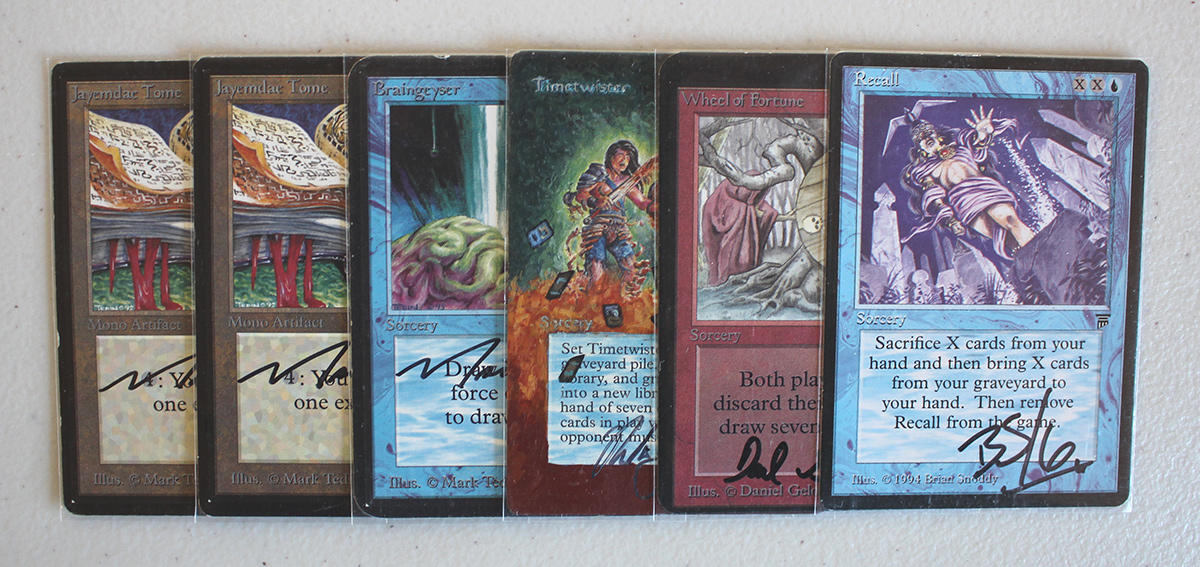
Sylvan is a single two mana investment that if not immediately dealt with, typically allows you to find whatever you need quickly, whether that be mana, removal, countermagic, or another threat. It is perfect in this deck, especially when you consider that the opponent will often be using Swords to Plowshares on your creatures, which translates to additional life which can be turned in to extra cards with Sylvan. It is the definition of tempo in this deck.
I will say that this is an open question, and that all of these cards have their own merits and upside. I’ve found that the more burn spells you play, the better Wheel of Fortune and Timetwister become (especially Timetwister, which can recycle the burn spells you’ve already used, and where you are likely to draw enough burn to kill your opponent before they can untap and use their new hand). For the purposes of this deck though, I’ve chose the streamlined package with more Sylvans and less of everything else, because I rarely want to tap out to cast Braingeyser for a few extra cards, for example. More often than not in this deck, that mana would be better served casting a Serendib and holding up Counterspell to protect it.
Constructing a Mana Base
Having looked at a lot of different mana bases for RUG decks, it seems like most people tend to include 4 Mishra’s Factories, and 3-4 copies of City of Brass. I think Strip Mine is far more important to this deck, so in metagames that allow for unrestricted Strip Mine, I would play 3-4 of them, and only a couple of Factories, because colored mana is at a premium in this deck, and you can’t really afford to play 9 colorless lands (Library of Alexandria is the best card in the deck, and an auto-include.
In this version I’ve made a conscious decision to forego City of Brass, for a couple of reasons. First, City of Brass is from the Arabian Nights expansion, meaning it would be destroyed by City in a Bottle. This deck is already weak to City in a Bottle, and I really don’t feel like having my mana potentially crippled by the card. Second, drawing and using multiple Cities tends to eat up your life total, as does Serendib Efreet, and frankly I’d rather use that life as a resource to draw more cards from Sylvan Library. Third, this deck is somewhat soft to Blood Moon, so the slots that I would consider devoting to City of Brass are instead reserved for a pair of main deck Islands, which can not only cast Serendib Efreet and many of our critical spells if a Blood Moon enters play, but can also cast the Blue Elemental Blasts in the sideboard.
The mana base is a tightrope you must carefully walk when designing this deck, as Kird Ape has its own requirements, as do the handful of spells you might play that require double blue in the casting cost. All of the colorless lands available act as very efficient spells, but I’d recommend resisting the allure of playing too many of them for these reasons. Similarly, I have stuck with only the on-color Moxen in this build, even though the off-color Moxen help accelerate out Serendib Efreet and Erhnam Djinn.
Designing the Sideboard
Variants of The Deck (or UWx control decks) are commonly seen, and versions that include The Abyss are always a battle. Whereas normal version of RUG/Arabian Aggro can easily lose to the card, this version at least plays a mix of countermagic to handle critical threats like The Abyss, and after sideboard you can also bring in things like Tranquility, Whirling Dervish, and Concordant Crossroads (which acts as a one mana removal spell for The Abyss because they are both Enchant Worlds, and also makes all of your attackers hasty, shortening the clock). Energy Flux and Red Elemental Blast are also quite potent against The Deck variants, and can easily be subbed in for stuff like Chain Lightning and Psionic Blast.
Faster aggressive decks like White Weenie and Zoo can be handled with cards like Earthquake, Control Magic, more Chain Lightnings, and others. I also like to bring in Shatter against White Weenie, because not only does it kill their Mishra’s Factories, but it can also deal with City in a Bottle, which many White Weenie variants may rely on against you (and can be devastating if not quickly dealt with).
Against Blue-Red Counterburn, Red Elemental Blast and Blue Elemental Blast can both come in, and are more efficient answers than whatever threats they are presenting.
Control Magic is a nice solution to black decks with Juzam Djinn and the like, as is Whirling Dervish (which also gets around City in a Bottle and The Abyss, all of which are reasons why I have chosen it for this particular sideboard configuration).
Playing RUG Tempo
This deck plays somewhat similarly to Zoo and RUG decks in Legacy or Modern, where you deploy a threat on turn one or two, and then follow up with removal or counters until your opponent is dead. Most of your threats are interchangeable and efficient, and many are resistant to Lightning Bolt.
The reason I play some mix of counters in this build is because not only are cards like The Abyss devastating against you, but sometimes the best route to victory is to cast one or two monsters and then simply counter the first removal spell, and your opponent will be dead in a few turns. There are no shortage of counters available, including Mana Drain (the best), Counterspell, Power Sink, Spell Blast, Avoid Fate, Flash Counter, and even Remove Soul. The mix and quantity is entirely up to you, so experiment and test until you find a configuration that suits you.
Ten Opening Hands with RUG Tempo
Here are ten randomly drawn opening hands with the deck (in order, and not manipulated in any way), and a few brief words with how I might look to play said opening hands.
Opening Hand 1
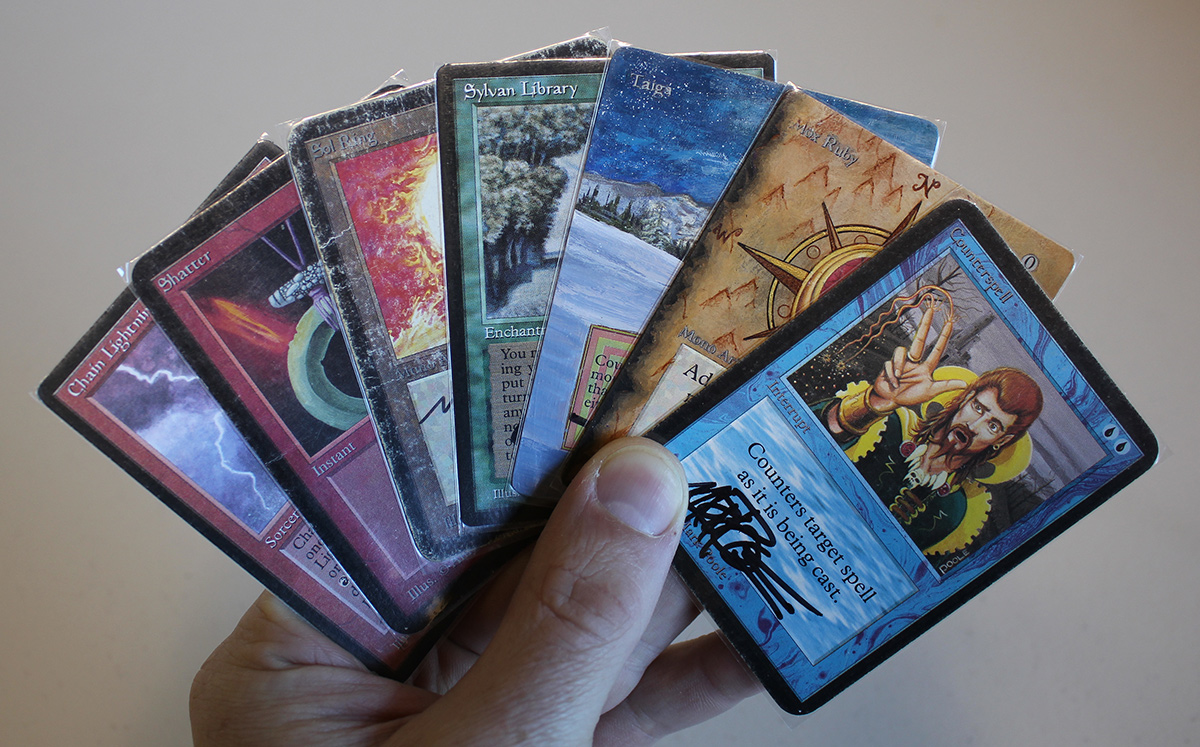
This hand lands blue mana and has a Counterspell laughing us in the face, but represents two removal spells and a first turn Sylvan Library, which is plenty of reason to keep this opener.
Opening Hand 2
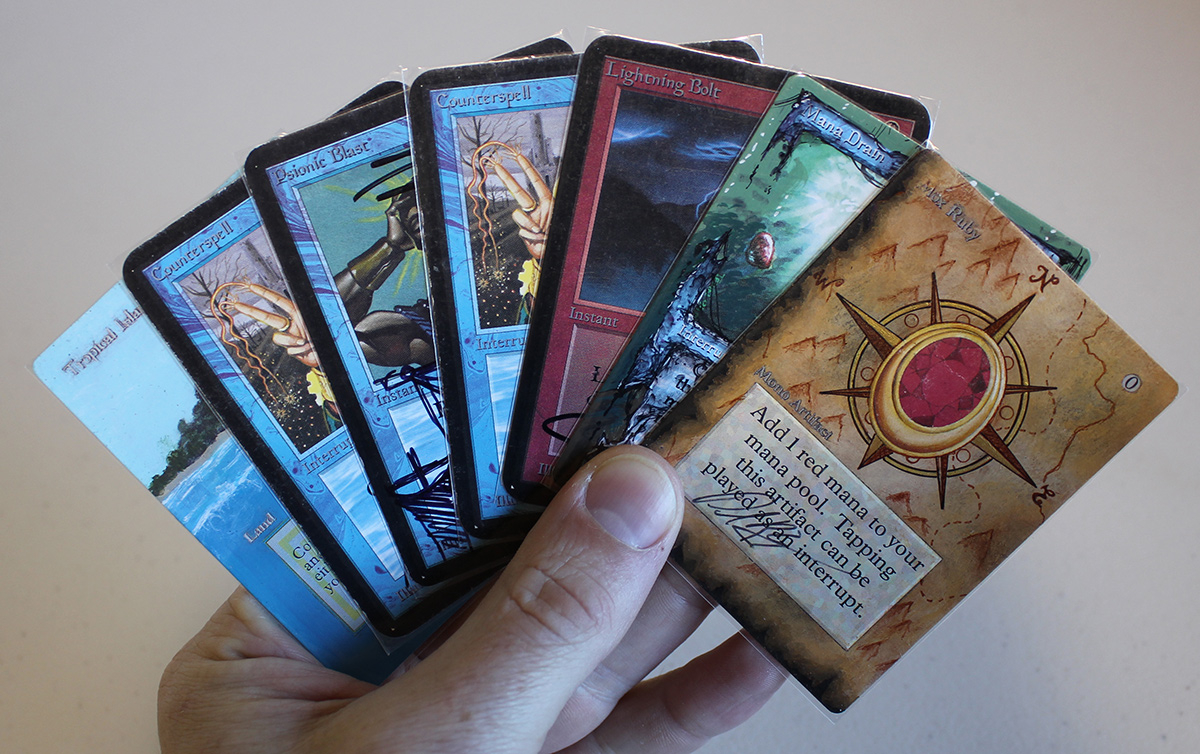
Plenty of sweet cards, without enough mana to reliably cast them. I’m going to cash this in for a new hand of six.
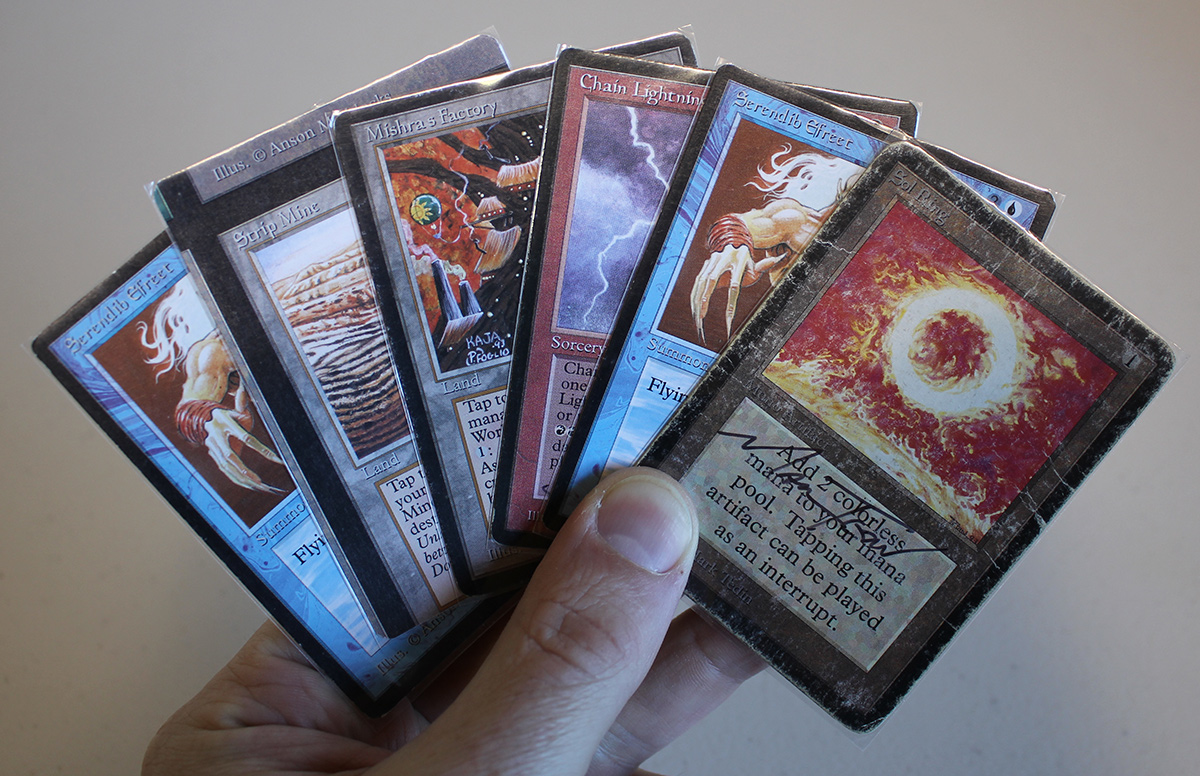
This hand also lacks great mana, but at least has some acceleration, and the lands present act as spells. We have Strip Mine to buy a little bit of time, and if we hit a blue source we are off to the races with the Sol Ring and double Serendib Efreets. I’m going to keep this one and aggressively scry away anything that’s not a land on top. Sol Ring is incredibly powerful in this deck, and especially this hand, so if we hit a blue source in the first couple of turns we’re more likely than not going to win this game.
Opening Hand 3
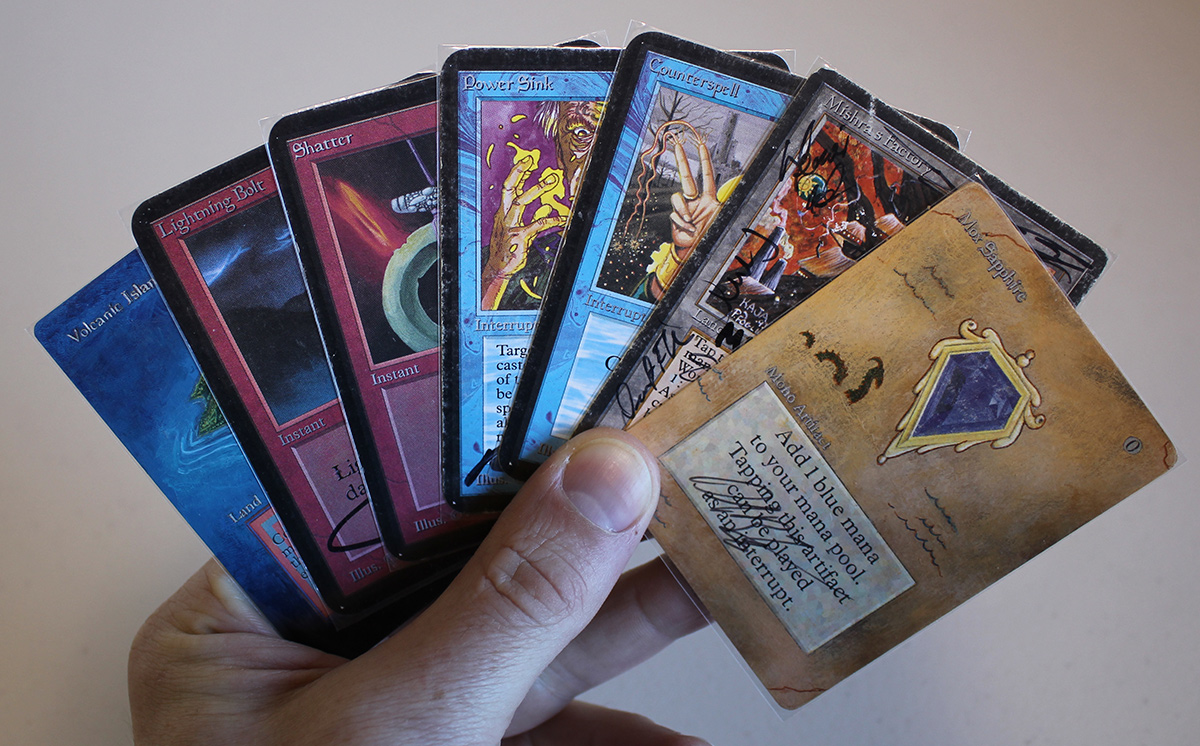
We’ve got mana, removal, and counters online from the first turn on. It’s a keeper.
Opening Hand 4
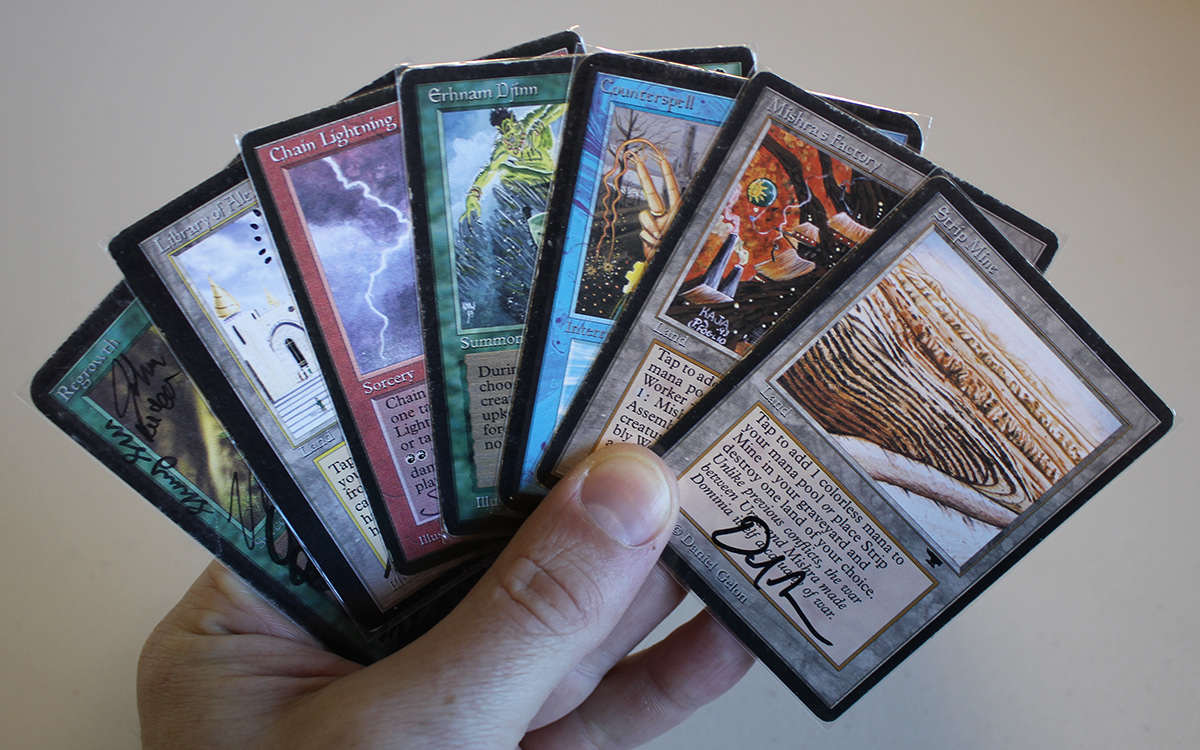
Library of Alexandria is the best card in this deck, and this hand is a keeper. What it lacks in colored mana, it makes up for with Library, Strip Mine, and Regrowth to potentially bring back one of the former.
Opening Hand 5

This is the kind of hand this deck lives for. Mana acceleration, card draw, countermagic, and a threat. I’d likely lead off with Volcanic in to Ancestral Recall if the coast is clear, and then drop Emerald in to Sol Ring, with the intent of either casting Erhnam Djinn on the second turn, or something else to bait with if we suspect our opponent has removal (or depending on what is drawn with Ancestral).
Opening Hand 6
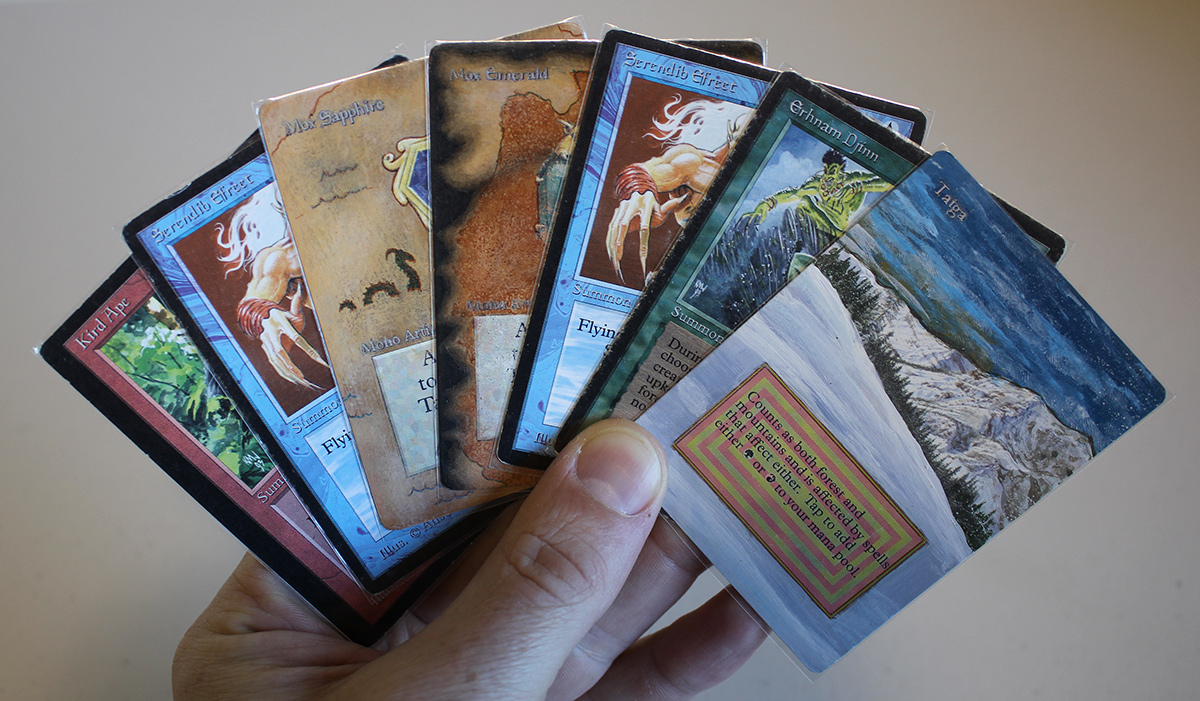
The hits keep on coming with this opener. This represents a first turn Serendib Efreet, followed by a second turn Serendib or more, depending on if another mana source is found in the first couple of turns. This is a great hand.
Opening Hand 7
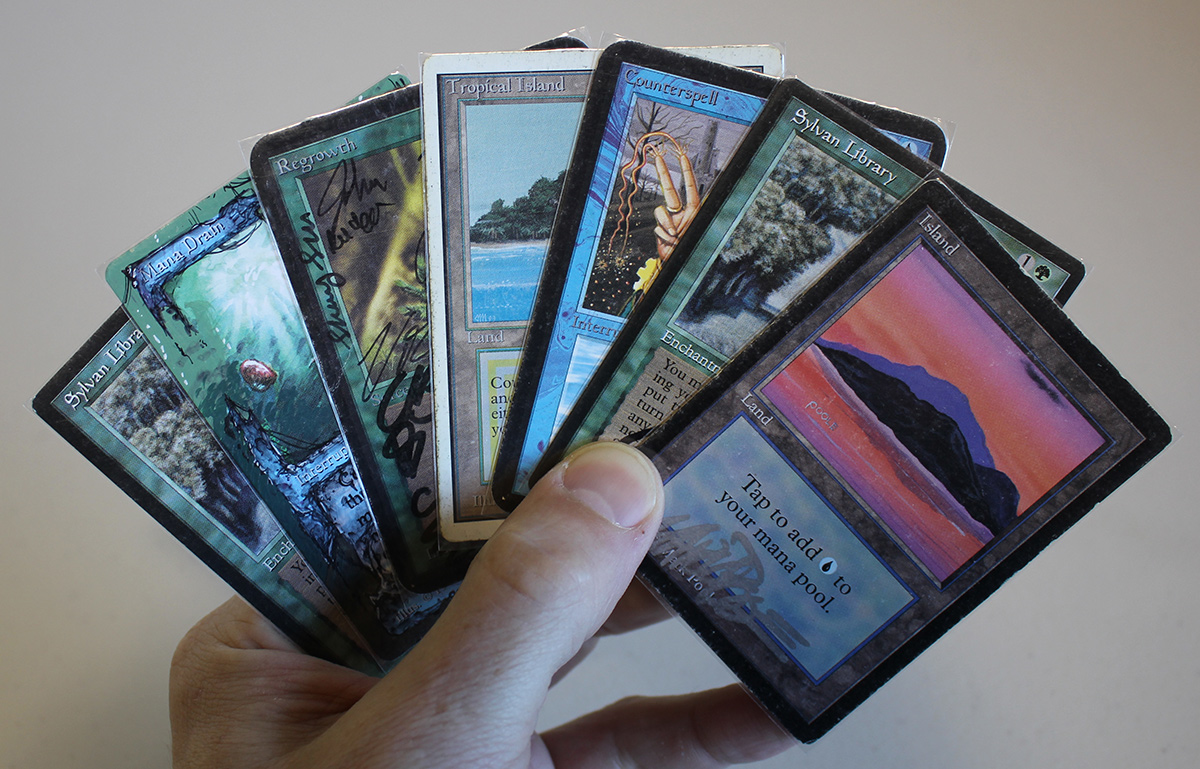
With multiple copies of Sylvan Library, countermagic, mana, and Regrowth, this is a solid if not unspectacular hand. I’d lead off with Island, and then on the second turn you’ll likely have to make a contextual decision of whether to play Sylvan or hold up countermagic. This should be based entirely on what the opponent is doing, but more than likely I’d probably cast the Sylvan, knowing that if it’s dealt with I have a backup copy, and if it’s not, will lead to finding more mana and gas.
Opening Hand 8
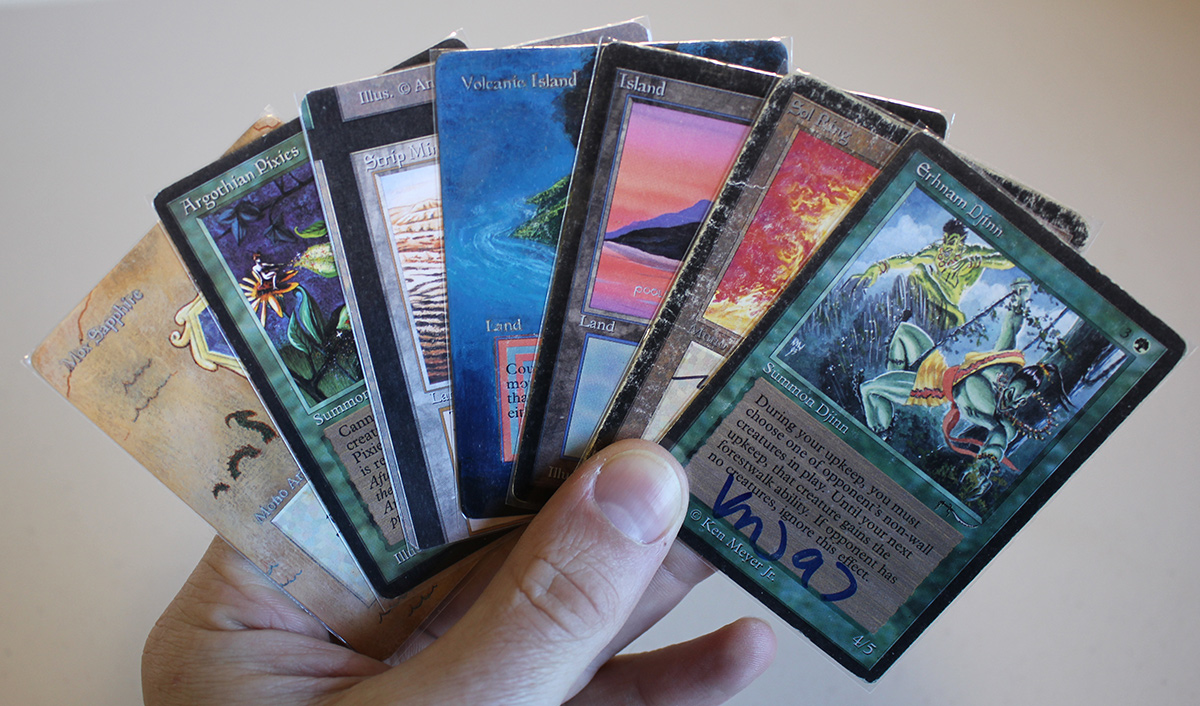
This hand has plenty of mana, but no green source to cast either of your on-color spells in hand. Strip Mine is the only disruption. I’d probably keep it anyway, knowing I have protection against a Library of Alexandria at least, but wouldn’t deploy the fast mana immediately. Doing so before we need to gives our opponent the opportunity to destroy it, Copy Artifact it, or tie it up with Relic Barrier, while preventing us from taking advantage of a possible top-decked Library of Alexandria of our own. There’s little reward to playing it out early in this situation.
Opening Hand 9
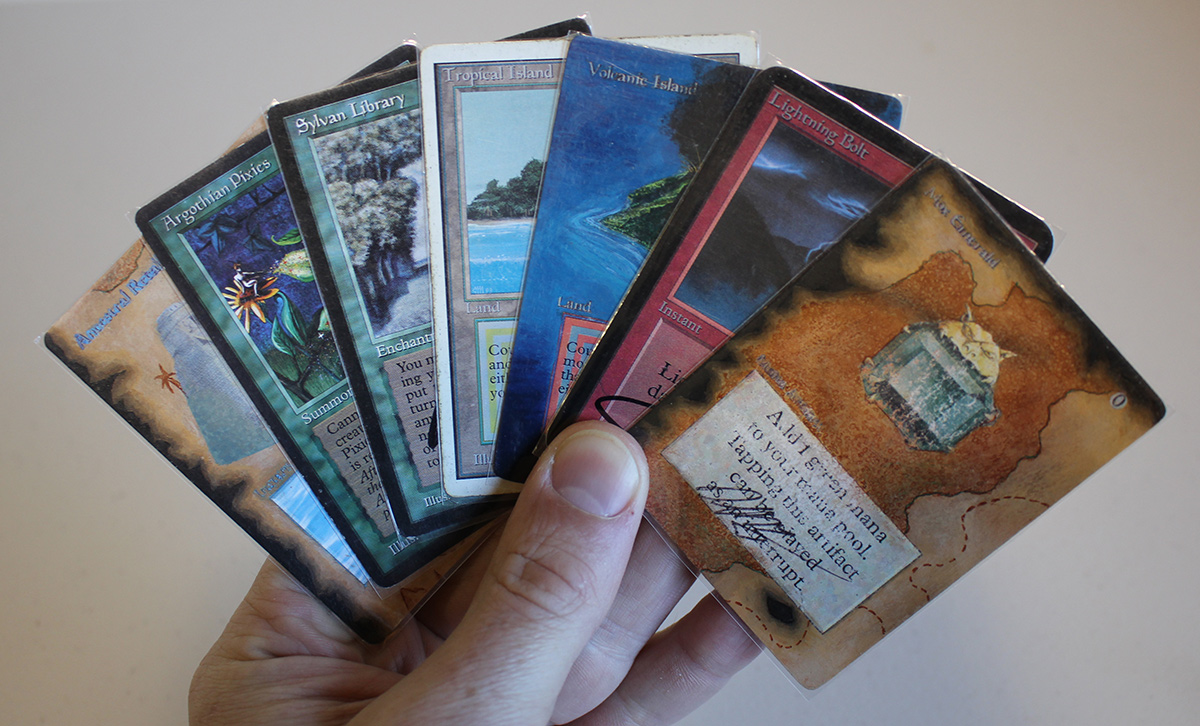
With solid mana, a threat, removal, and multiple draw spells, this may be the best hand we’ve seen so far. I’d likely lead with Mox Emerald and Tropical Island in to Argothian Pixies on the first turn, and then get our draw on next turn. Doing so enables us to start the clock immediately, and puts our opponent on the back foot, reacting to what we do, from the first turn onwards. If they play a creature on turn one or two we can likely untap, drop our Volcanic Island and Lightning Bolt it, and then follow up with Sylvan Library, saving Ancestral for the next turn. This allows us to use all of our mana most efficiently.
Opening Hand 10
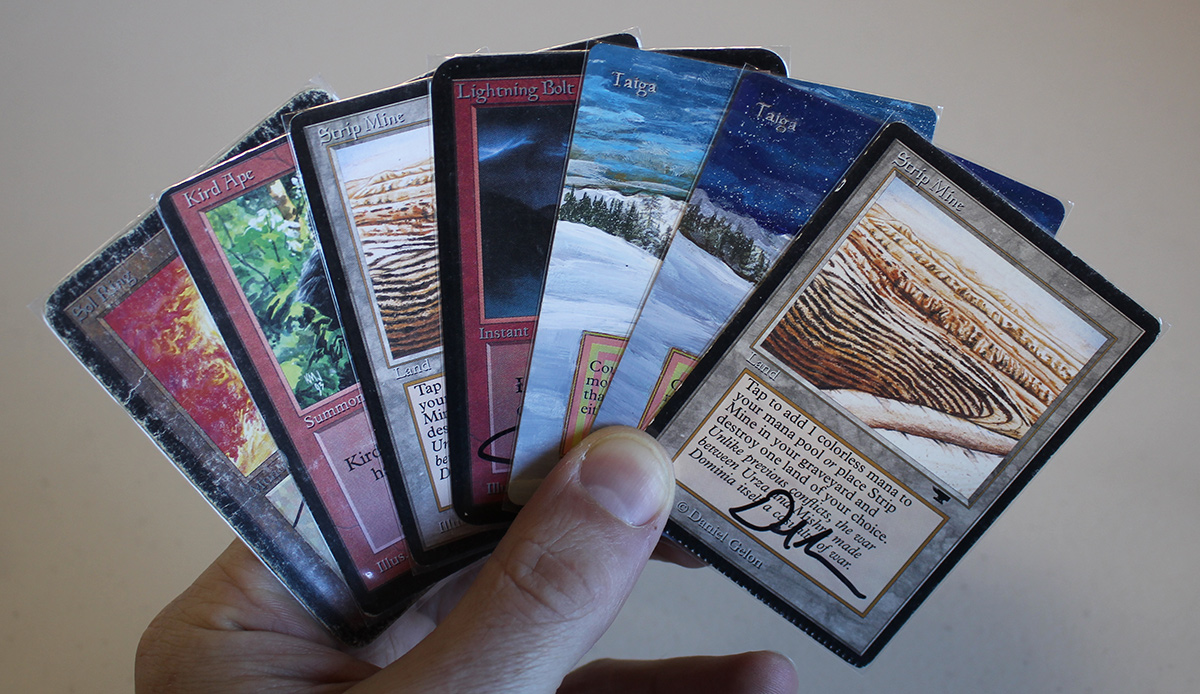
This hand is a perfect illustration of why Strip Mine is usually at its best in low to the ground aggressive strategies. We can begin by casting an efficient threat on the first turn, and then essentially rewind the game a turn each of the next two turns by using Strip Mine to set the opponent back a turn in their mana development, all while attacking with Kird Ape, and having the mana up to cast our removal at the same time. Tempo baby!
Concluding Thoughts
RUG Tempo is a nice starting point for those seeking an aggro control deck in Old School 93-94. It can be built very aggressively, like a burn deck with very efficient creatures, or can be built to be more controlling and a solid tempo deck.
Stay tuned to Eternal Central for more sick 93-94 brews all month long. Thanks for reading.

